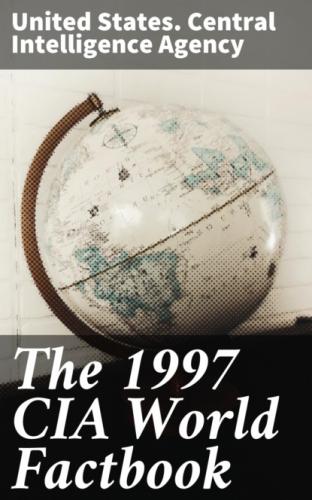Judicial branch: Supreme Court of Justice or Hof van Cassatie in Flemish, Cour de Cassation in French, judges are appointed for life by the Belgian monarch
Political parties and leaders: Flemish Christian Democrats or CVP (Christian People's Party) [Marc VAN PEEL, president]; Francophone Christian Democrats or PSC (Social Christian Party) [Gerard DEPREZ, president]; Flemish Socialist Party or SP [Louis TOBBACK, president]; Francophone Socialist Party or PS [Philippe BUSQUIN, president]; Flemish Liberal Democrats or VLD [Herman DE CROO, president]; Francophone Liberal Reformation Party or PRL [Louis MICHEL, president]; Francophone Democratic Front or FDF [Olivier MAINGAIN, president]; Volksunie or VU [Bert ANCIAUX, president]; Vlaams Blok or VB; National Front or FN [Frank VANHECKE, president]; AGALEV (Flemish Greens) [no president]; ECOLO (Francophone Greens) [no president]; other minor parties
Political pressure groups and leaders: Christian and Socialist Trade Unions; Federation of Belgian Industries; numerous other associations representing bankers, manufacturers, middle-class artisans, and the legal and medical professions; various organizations represent the cultural interests of Flanders and Wallonia; various peace groups such as the Flemish Action Committee Against Nuclear Weapons and Pax Christi
International organization participation: ACCT, AfDB, AG (observer),
AsDB, Australia Group, Benelux, BIS, CCC, CE, CERN, EBRD, ECE, EIB,
ESA, EU, FAO, G- 9, G-10, IADB, IAEA, IBRD, ICAO, ICC, ICFTU, ICRM,
IDA, IEA, IFAD, IFC, IFRCS, IHO, ILO, IMF, IMO, Inmarsat, Intelsat,
Interpol, IOC, IOM, ISO, ITU, MTCR, NACC, NATO, NEA, NSG, OAS
(observer), OECD, OSCE, PCA, UN, UNCTAD, UNESCO, UNHCR, UNIDO,
UNMOGIP, UNMOP, UNPREDEP, UNRWA, UNTAES, UNTSO, UPU, WCL, WEU, WHO,
WIPO, WMO, WToO, WTrO, ZC
Diplomatic representation in the US: chief of mission: Ambassador Andre ADAM chancery: 3330 Garfield Street NW, Washington, DC 20008 telephone: [1] (202) 333–6900 FAX: [1] (202) 333–3079 consulate(s) general : Atlanta, Chicago, Los Angeles, and New York
Diplomatic representation from the US: chief of mission: Ambassador Alan J. BLINKEN embassy: 27 Boulevard du Regent, B-1000 Brussels mailing address: APO AE 09724, PSC 82, Box 002, Brussels telephone : [32] (2) 508–2111 FAX: [32] (2) 511–2725
Flag description: three equal vertical bands of black (hoist side), yellow, and red; the design was based on the flag of France
Economy
Economy - overview: This highly developed private enterprise economy has capitalized on its central geographic location, highly developed transport network, and diversified industrial and commercial base. Industry is concentrated mainly in the populous Flemish area in the north, although the government is encouraging reinvestment in the southern region of Walloon. With few natural resources, Belgium must import substantial quantities of raw materials and export a large volume of manufactures, making its economy unusually dependent on the state of world markets. Two-thirds of its trade is with other EU countries. The economy grew at a strong 4% annual pace during the period 1988–90, slowed to 1% in 1991–92, dropped by 1.5% in 1993, recovered with moderate 2.3% growth in 1994 and 1995, and fell off again to 1.4% in 1996, with continued substantial unemployment. Belgium's public debt has risen to 140% of GDP, and the government is trying to control its expenditures to bring the figure more into line with other industrialized countries.
GDP: purchasing power parity - $204.8 billion (1996 est.)
GDP - real growth rate: 1.4% (1996 est.)
GDP - per capita: purchasing power parity - $20,300 (1996 est.)
GDP - composition by sector: agriculture: 2% industry: 28% services : 70% (1994)
Inflation rate - consumer price index: 2.1% (1996)
Labor force: total: 4.126 million by occupation: services 69.7%, industry 27.7%, agriculture 2.6% (1992)
Unemployment rate: 14% (1996 est.)
Budget: revenues : $NA expenditures: $NA, including capital expenditures of $NA
Industries: engineering and metal products, motor vehicle assembly, processed food and beverages, chemicals, basic metals, textiles, glass, petroleum, coal
Industrial production growth rate: 3.4% (1995 est.)
Electricity - capacity: 13.59 million kW (1994)
Electricity - production: 74.4 billion kWh (1995)
Electricity - consumption per capita: 6,823 kWh (1995 est.)
Agriculture - products: sugar beets, fresh vegetables, fruits, grain, tobacco; beef, veal, pork, milk
Exports: total value: $108 billion (f.o.b., 1994) Belgium-Luxembourg Economic Union (BLEU) commodities: iron and steel, transportation equipment, tractors, diamonds, petroleum products partners : EU 67.2% (Germany 19%), US 5.8%, former Communist countries 1.4% (1994)
Imports: total value: $140 billion (c.i.f., 1994) Belgium-Luxembourg Economic Union commodities: fuels, grains, chemicals, foodstuffs partners: EU 68% (Germany 22.1%), US 8.8%, former Communist countries 0.8% (1994)
Debt - external: $31.3 billion (1992 est.)
Economic aid: donor: ODA, $808 million (1993)
Currency: 1 Belgian franc (BF) = 100 centimes
Exchange rates: Belgian francs (BF) per US$1 - 33.067 (January 1997), 30.962 (1996), 29.480 (1995), 33.456 (1994), 34.597 (1993), 32.150 (1992)
Fiscal year: calendar year
@Belgium:Communications
Telephones: 5.691 million (1992 est.)
Telephone system: highly developed, technologically advanced, and completely automated domestic and international telephone and telegraph facilities domestic: nationwide cellular telephone system; extensive cable network; limited microwave radio relay network international : 5 submarine cables; satellite earth stations - 2 Intelsat (Atlantic Ocean) and 1 Eutelsat
Radio broadcast stations: AM 3, FM 39, shortwave 0
Radios: 100,000 (1992 est.)
Television broadcast stations: 32 (1987 est.)
Televisions: 3,315,662 (1993 est.)
@Belgium:Transportation
Railways: total: 3,396 km (2,363 km electrified; 2,563 km double track) standard gauge : 3,396 km 1.435-m gauge (1995)
Highways: total: 142,563 km paved: 142,563 km (including 1,667 km of expressways) unpaved: 0 km (1995 est.)
Waterways: 2,043 km (1,528 km in regular commercial use)
Pipelines: crude oil 161 km; petroleum products 1,167 km; natural gas 3,300 km
Ports and harbors: Antwerp (one of the world's busiest ports), Brugge,
Gent, Hasselt, Liege, Mons, Namur, Oostende, Zeebrugge
Merchant marine: total: 25 ships (1,000 GRT or over) totaling 102,363 GRT/152,951 DWT ships by type: bulk 1, cargo 7, chemical tanker 4, combination bulk 2, liquefied gas tanker 1, oil tanker 10 (1996 est.)
Airports: 42 (1996 est.)
Airports - with paved runways: total : 39 over 3,047 m: 6 2,438 to 3,047 m: 9 1,524 to 2,437 m: 2 914 to 1,523 m: 1 under 914 m : 21 (1996 est.)
Airports - with unpaved
